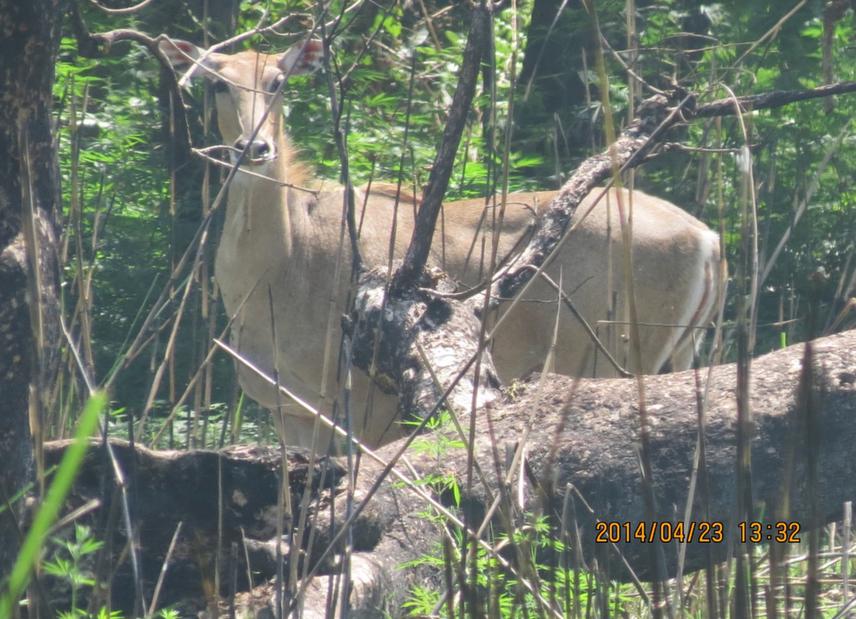Kalpana Bisht
Other projects
23 May 2017
Understanding and Analysis of Blue Bull Conservation and its Conflicts with Local Communities in the Western Terai Arc Landscape of Nepal
The aim is to assess the ecology of blue bulls and understand its conflicts with the local communities in Shuklaphanta Willdife Reserve.

Female Blue bull captured during observation.
Blue-bull popularly known as Nilgai in Nepal, is the biggest Asian antelope with habitat limited to central and northern India, eastern Pakistan and parts of southern Nepal. The species is tiger prey, and is largely believed that its population is gradually declining throughout its entire range. Managers and conservationists believe that forest destruction, habitat modification and increasing encounter with people are few of the emerging threats to this species.
However, these logics are seldom supported by the science and database. There has been an insignificant effort to conserve this handsome species and its habitat in the lowland particularly in Shuklaphanta Wildlife Reserve. There has been indispensible need of regular monitoring of population status, available habitat and quality and minimizing the human-Blue bull conflicts in order to save this species. In order to understand the ecological status, a set of methodologies such as transect survey, GIS mapping, questionnaire method and awareness program will be employed in Shuklaphanta Wildlife Reserve, Nepal.
So this research will mainly focus on ecological significance of Blue bull, its status and habitat preference and is expected to address problem in Shuklaphanta Wildlife Reserve and minimize conflicts.